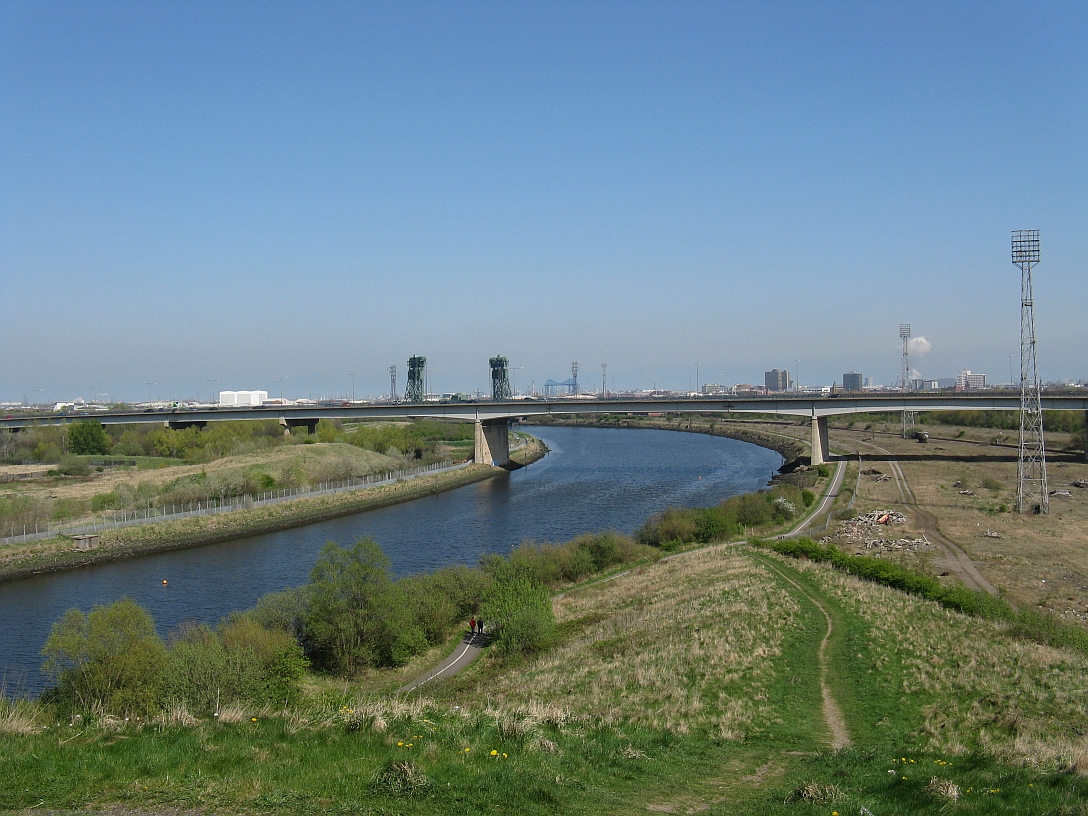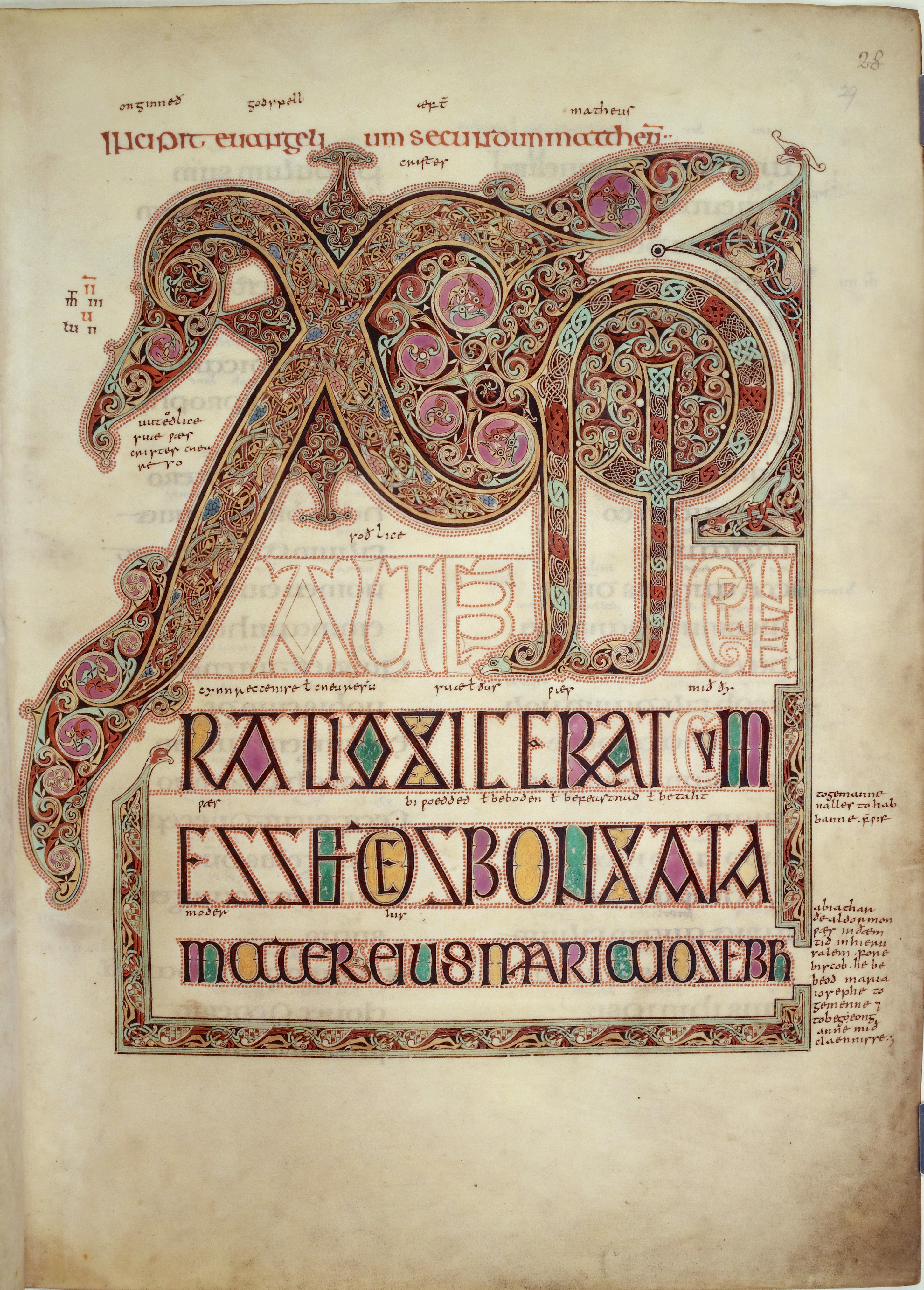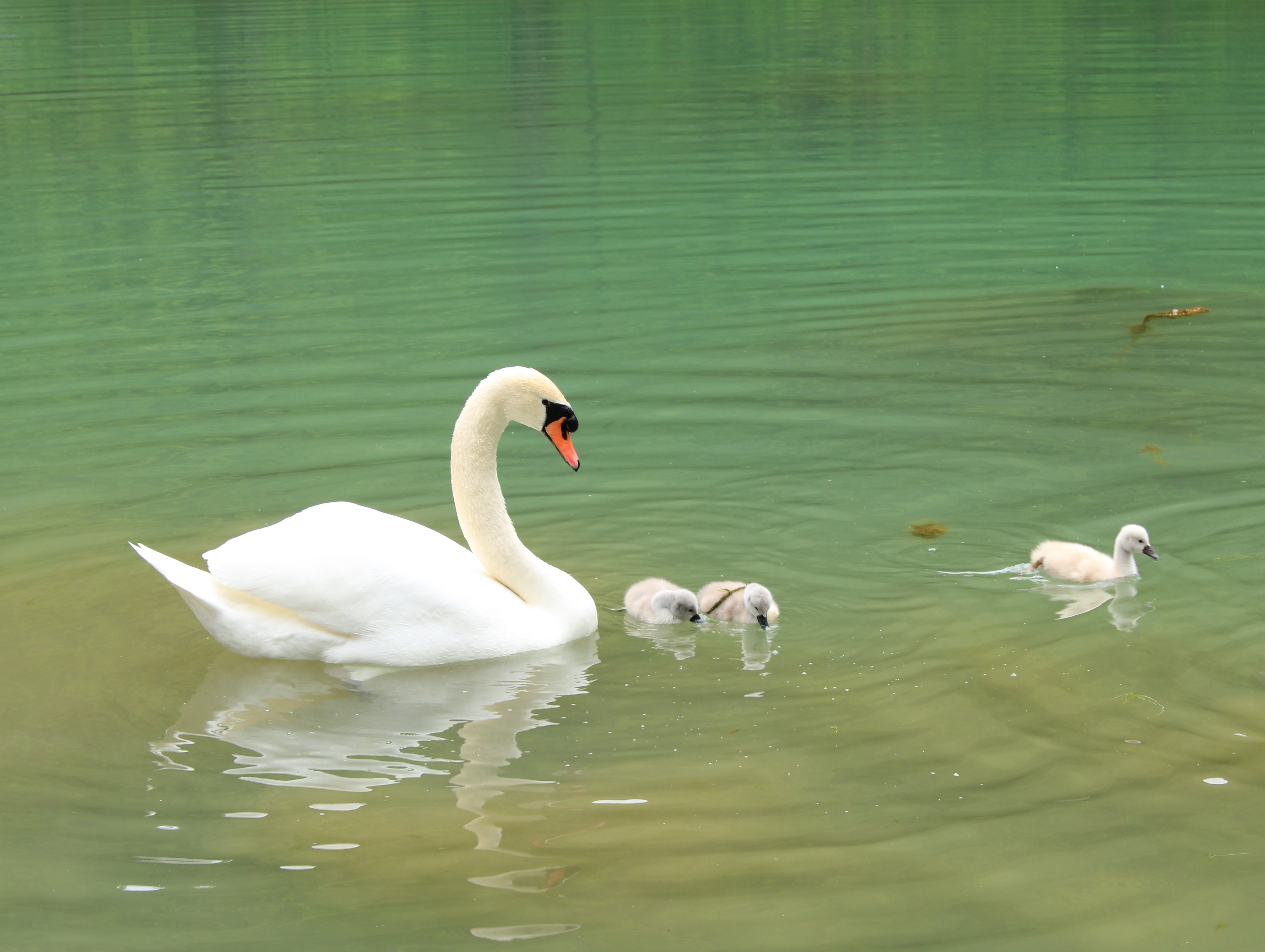|
Walworth, County Durham
Walworth is a central small village with outlying farmsteads, which together constitute a scattered village in the borough of Darlington and the ceremonial county of County Durham, England. It is a civil parish which does not have a church. The population of this civil parish at the 2011 Census was 240. It is situated to the north-west of Darlington. The nucleus of the central village is the 16th-century Walworth Castle, which is now a hotel. On the north side of the village, around North Farm, are earthworks signifying a lost settlement, grouped around a barn which was once a chapel. Central village location and structure Walworth and Walworth Gate are said to be on the line of the Roman road, Dere Street. Walworth is located at the T-junction where Newton Lane meets Walworth Road and the disused Quarry Hole, north-west of Darlington and east of Denton. The village is triangular in plan, with Walworth Castle and Walworth Park at its centre. North Farm and the lost sett ... [...More Info...] [...Related Items...] OR: [Wikipedia] [Google] [Baidu] |
Sedgefield (UK Parliament Constituency)
Sedgefield is a Constituencies of the Parliament of the United Kingdom, constituency in County Durham represented in the House of Commons of the United Kingdom, House of Commons of the Parliament of the United Kingdom, UK Parliament since 2019 United Kingdom general election, 2019 by Paul Howell (MP), Paul Howell of the Conservative Party (UK), Conservative Party. It elects one Member of Parliament (United Kingdom), Member of Parliament (MP) by the first past the post system of election. History 1918–1974 Sedgefield was first created under the Representation of the People Act 1918 for the 1918 United Kingdom general election, 1918 general election, comprising primarily southern parts of the abolished South East Durham (UK Parliament constituency), South Eastern Division of Durham, including the communities of Sedgefield, Segefield and Billingham. It also included parts of the former Mid Durham (UK Parliament constituency), Mid Durham seat (Ferryhill) and a small area transfe ... [...More Info...] [...Related Items...] OR: [Wikipedia] [Google] [Baidu] |
Electoral Roll
An electoral roll (variously called an electoral register, voters roll, poll book or other description) is a compilation that lists persons who are entitled to vote for particular elections in a particular jurisdiction. The list is usually broken down by electoral districts, and is primarily prepared to assist election officials at polling places. Most jurisdictions maintain permanent electoral rolls, which are updated continuously or periodically (such as France which updates them annually), while some jurisdictions compile new electoral rolls before each election. Electoral rolls are the result of a process of voter registration. In most jurisdictions, voter registration (and being listed on an electoral roll) is a prerequisite for voting at an election. Some jurisdictions do not require voter registration, and do not use electoral rolls, such as the state of North Dakota in the United States. In those jurisdictions a voter must provide identification and proof of entitlement ... [...More Info...] [...Related Items...] OR: [Wikipedia] [Google] [Baidu] |
Ainscough
Ainscough is an Old Norse, Scandinavian surname,. also spelled Ayscough, Aiskew, Askew, Ascough and Aynscough. Origins and variants It is thought that the name is derived from the Norse words "ask skog", although other sources suggest that Aiskew is a corruption of the words "Eiki Skogr" translating to Oak Wood. An alternative Swedish translation for the name "enskog" is "juniper forest". The "en" part of the word meaning juniper, "skog" meaning wood or forest. Today the name is pronounced . Other suggestions indicate that the name Ainscough is of French origin. When William the Conqueror invaded England, he brought his army of knights. These knights from Normandy were given land for their effort during the invasion and were placed as his head of government in each Shire. Wikipedia has information about a plaque placed in Normandy Cathedral before leaving for England. This plaque has a list of knights. There are two knights listed as " Ansgot" which would have been the French s ... [...More Info...] [...Related Items...] OR: [Wikipedia] [Google] [Baidu] |
House Of Neville
The Neville or Nevill family (originally FitzMaldred) is a nobility, noble house of early medieval origin, which was a leading force in Kingdom of England, English politics in the later Middle Ages. The family became one of the two major powers in northern England and played a central role in the Wars of the Roses along with Percy–Neville feud, their rival, the House of Percy. Origins The male-line origin of the Neville family first appears in surviving records not until decades after the Norman Conquest of England (1066) and Domesday Book (1086), which did not cover County Durham, the area of their earliest recorded landholdings. The male line of the Nevilles was of History of Anglo-Saxon England, native origin, and the family may well have been part of the pre-Conquest aristocracy of Northumbria. Following the Norman Conquest, most of the existing Anglo-Saxon aristocracy of England were dispossessed and replaced by a new Norman ruling elite, and although such survivals are very ... [...More Info...] [...Related Items...] OR: [Wikipedia] [Google] [Baidu] |
Black Death In England
The Black Death was a bubonic plague pandemic, which reached England in June 1348. It was the first and most severe manifestation of the second pandemic, caused by '' Yersinia pestis'' bacteria. The term ''Black Death'' was not used until the late 17th century. Originating in Asia, it spread west along the trade routes across Europe and arrived on the British Isles from the English province of Gascony. The plague was spread by flea-infected rats, as well as individuals who had been infected on the continent. Rats were the reservoir hosts of the ''Y. pestis'' bacteria and the Oriental rat flea was the primary vector. The first-known case in England was a seaman who arrived at Weymouth, Dorset, from Gascony in June 1348. By autumn, the plague had reached London, and by summer 1349 it covered the entire country, before dying down by December. Low estimates of mortality in the early twentieth century have been revised upwards due to re-examination of data and new information, an ... [...More Info...] [...Related Items...] OR: [Wikipedia] [Google] [Baidu] |
River Tees
The River Tees (), in Northern England, rises on the eastern slope of Cross Fell in the North Pennines and flows eastwards for to reach the North Sea between Hartlepool and Redcar near Middlesbrough. The modern day history of the river has been tied with the industries on Teesside in its lower reaches, where it has provided the means of import and export of goods to and from the North East England. The need for water further downstream also meant that reservoirs were built in the extreme upper reaches, such as Cow Green Reservoir, Cow Green. Etymology The name ''Tees'' is possibly of Common Brittonic, Brittonic origin. The element ''*tēs'', meaning "warmth" with connotations of "boiling, excitement" (Welsh language, Welsh ''tes''), may underlie the name. ''*Teihx-s'', a root possibly derived from Brittonic ''*ti'' (Welsh ''tail'', "dung, manure"), has also been used to explain the name ''Tees'' (compare River Tyne#Origins of name, River Tyne). Geography The river drains and ... [...More Info...] [...Related Items...] OR: [Wikipedia] [Google] [Baidu] |
Malcolm III Of Scotland
Malcolm III ( mga, Máel Coluim mac Donnchada, label= Medieval Gaelic; gd, Maol Chaluim mac Dhonnchaidh; died 13 November 1093) was King of Scotland from 1058 to 1093. He was later nicknamed "Canmore" ("ceann mòr", Gaelic, literally "big head"; Gaelic meaning and understood as "great chief"). Malcolm's long reign of 35 years preceded the beginning of the Scoto-Norman age. Henry I of England and Eustace III of Boulogne were his sons-in-law, making him the maternal grandfather of Empress Matilda, William Adelin and Matilda of Boulogne. All three of them were prominent in English politics during the 12th century. Malcolm's kingdom did not extend over the full territory of modern Scotland: many of the islands and the land north of the River Oykel were Scandinavian, and south of the Firth of Forth there were numerous independent or semi-independent realms, including the kingdom of Strathclyde and Bamburgh, and it is not certain what if any power the Scots exerted there on ... [...More Info...] [...Related Items...] OR: [Wikipedia] [Google] [Baidu] |
Anglo-Saxons
The Anglo-Saxons were a cultural group who inhabited England in the Early Middle Ages. They traced their origins to settlers who came to Britain from mainland Europe in the 5th century. However, the ethnogenesis of the Anglo-Saxons happened within Britain, and the identity was not merely imported. Anglo-Saxon identity arose from interaction between incoming groups from several Germanic tribes, both amongst themselves, and with indigenous Britons. Many of the natives, over time, adopted Anglo-Saxon culture and language and were assimilated. The Anglo-Saxons established the concept, and the Kingdom, of England, and though the modern English language owes somewhat less than 26% of its words to their language, this includes the vast majority of words used in everyday speech. Historically, the Anglo-Saxon period denotes the period in Britain between about 450 and 1066, after their initial settlement and up until the Norman Conquest. Higham, Nicholas J., and Martin J. Ryan. ''The An ... [...More Info...] [...Related Items...] OR: [Wikipedia] [Google] [Baidu] |
Swan House Farmhouse And Cottage - Geograph
Swans are birds of the family Anatidae within the genus ''Cygnus''. The swans' closest relatives include the geese and ducks. Swans are grouped with the closely related geese in the subfamily Anserinae where they form the tribe Cygnini. Sometimes, they are considered a distinct subfamily, Cygninae. There are six living and many extinct species of swan; in addition, there is a species known as the coscoroba swan which is no longer considered one of the true swans. Swans usually mate for life, although "divorce" sometimes occurs, particularly following nesting failure, and if a mate dies, the remaining swan will take up with another. The number of eggs in each clutch ranges from three to eight. Etymology and terminology The English word ''swan'', akin to the German , Dutch and Swedish , is derived from Indo-European root ' ('to sound, to sing'). Young swans are known as '' cygnets'' or as '' swanlings''; the former derives via Old French or (diminutive suffix et 'little') f ... [...More Info...] [...Related Items...] OR: [Wikipedia] [Google] [Baidu] |
Cropmark
Cropmarks or crop marks are a means through which sub-surface archaeological, natural and recent features may be visible from the air or a vantage point on higher ground or a temporary platform. Such marks, along with parch marks, soil marks and frost marks, can reveal buried archaeological sites that are not visible from the ground. Description Crop marks are due to the principle of differential growth. One of the factors controlling the growth of vegetation is the condition of the soil. A buried stone wall, for example, will affect crop growth above it, as its presence channels water away from its area and occupies the space of the more fertile soil. Conversely, a buried ditch, with a fill containing more organic matter than the natural earth, provides much more conducive conditions and water will naturally collect there, nourishing the plants growing above. The differences in conditions will cause some plants to grow more strongly and therefore taller, and others less str ... [...More Info...] [...Related Items...] OR: [Wikipedia] [Google] [Baidu] |
Thomas Holt (architect)
Thomas Holt (c. 1578 – 1624), was a 17th-century English architect who designed a number of buildings at the University of Oxford. Holt, a master carpenterTyack, 1998, page 88 and architect from either Halifax or York, is notable for designing important works in Renaissance architecture built at Oxford. He designed the whole structure of Wadham College, which was built between 1610 and 1613. As a master carpenter he was responsible for the hammerbeam roof of the Hall. From 1613 onwards he designed the great quadrangle of the examination schools there, now part of the Bodleian Library, introducing some new architectural features. Holt completed the schools quadrangle in 1624,Tyack, 1998, page 93 the year of his death. Other buildings at Oxford are ascribed to him with less certainty, though he probably prepared designs for many of them. Holt is registered as a privileged person in the university, aged 40, on 30 October 1618; he is described as ''"Faberlignarius Coll. Novi"''. ... [...More Info...] [...Related Items...] OR: [Wikipedia] [Google] [Baidu] |
Listed Building
In the United Kingdom, a listed building or listed structure is one that has been placed on one of the four statutory lists maintained by Historic England in England, Historic Environment Scotland in Scotland, in Wales, and the Northern Ireland Environment Agency in Northern Ireland. The term has also been used in the Republic of Ireland, where buildings are protected under the Planning and Development Act 2000. The statutory term in Ireland is "protected structure". A listed building may not be demolished, extended, or altered without special permission from the local planning authority, which typically consults the relevant central government agency, particularly for significant alterations to the more notable listed buildings. In England and Wales, a national amenity society must be notified of any work to a listed building which involves any element of demolition. Exemption from secular listed building control is provided for some buildings in current use for worsh ... [...More Info...] [...Related Items...] OR: [Wikipedia] [Google] [Baidu] |

_election_results.png)






